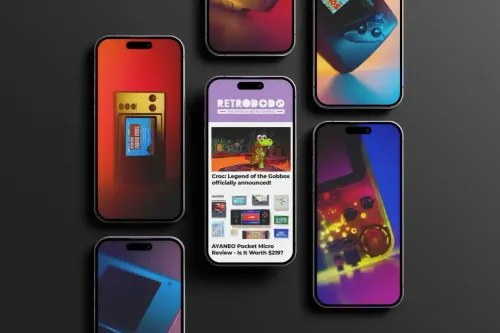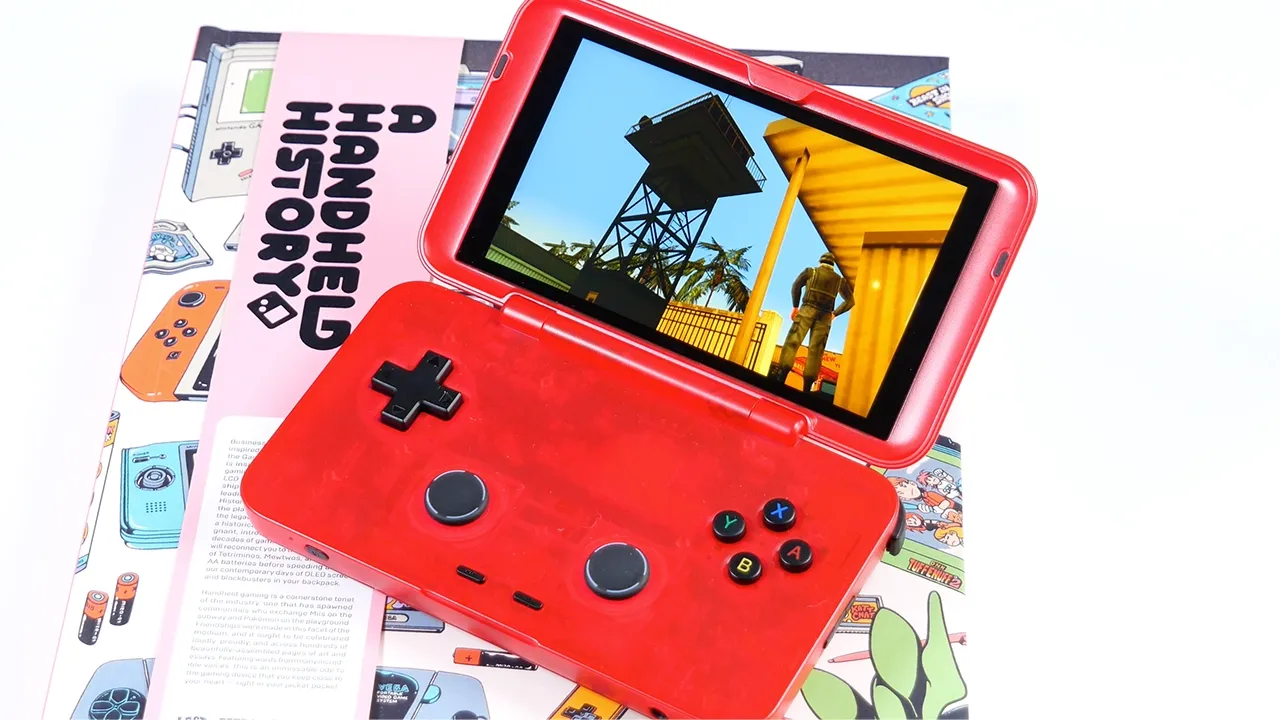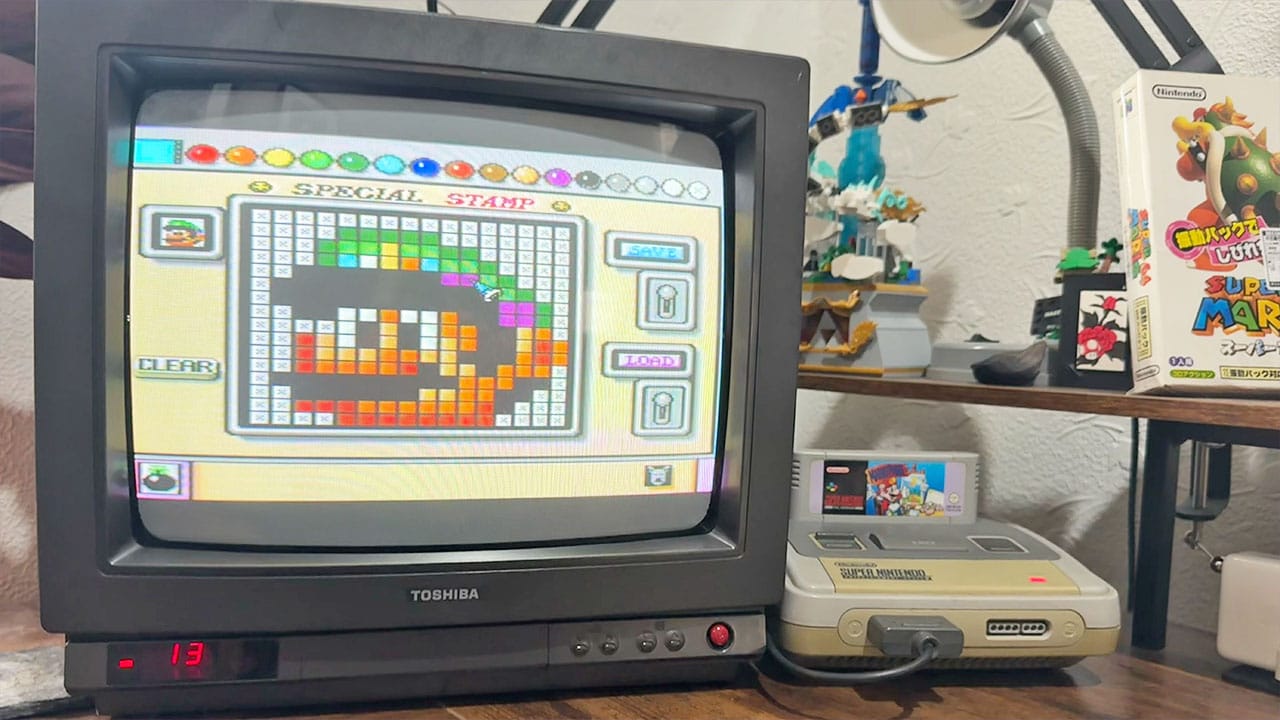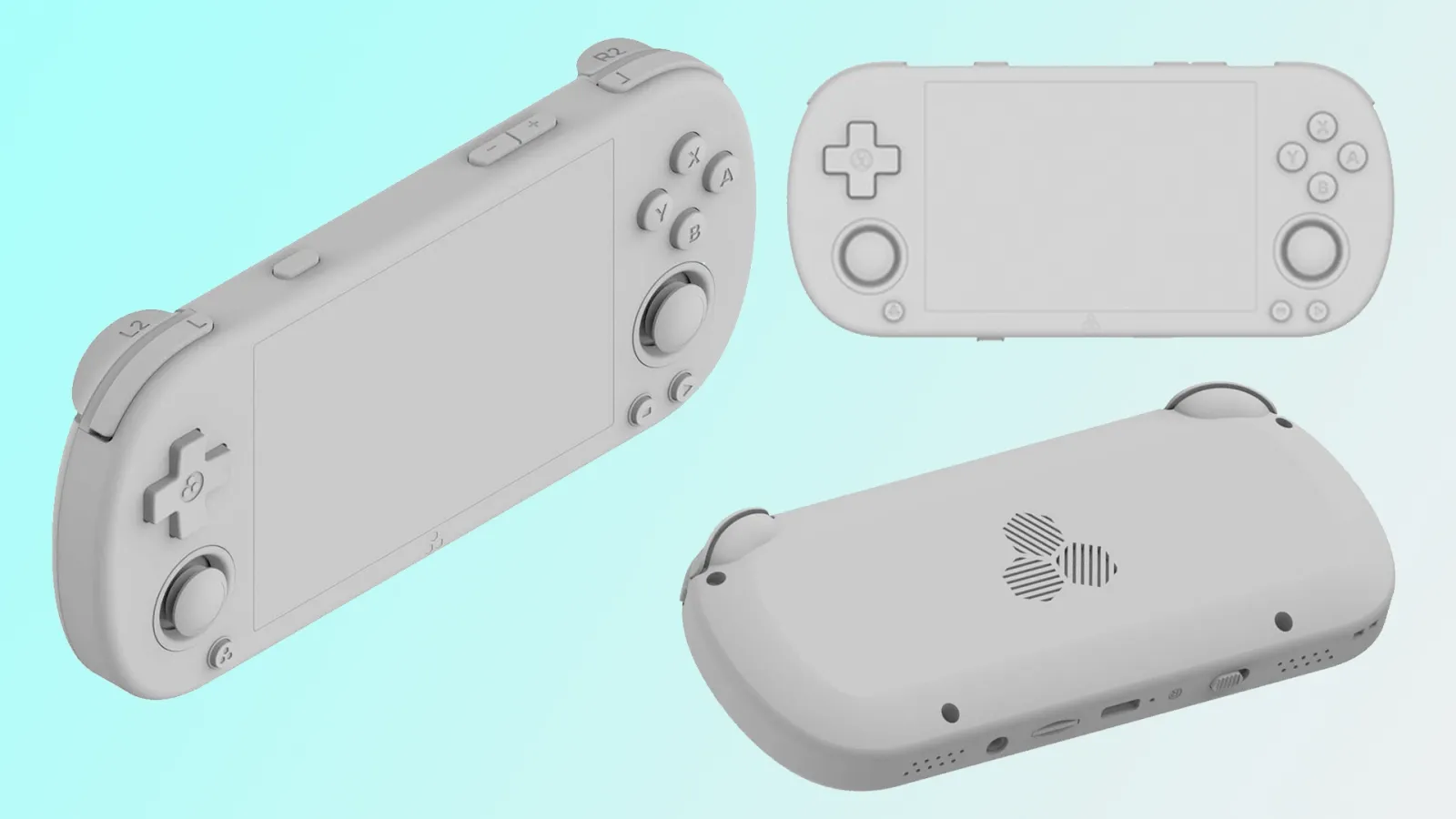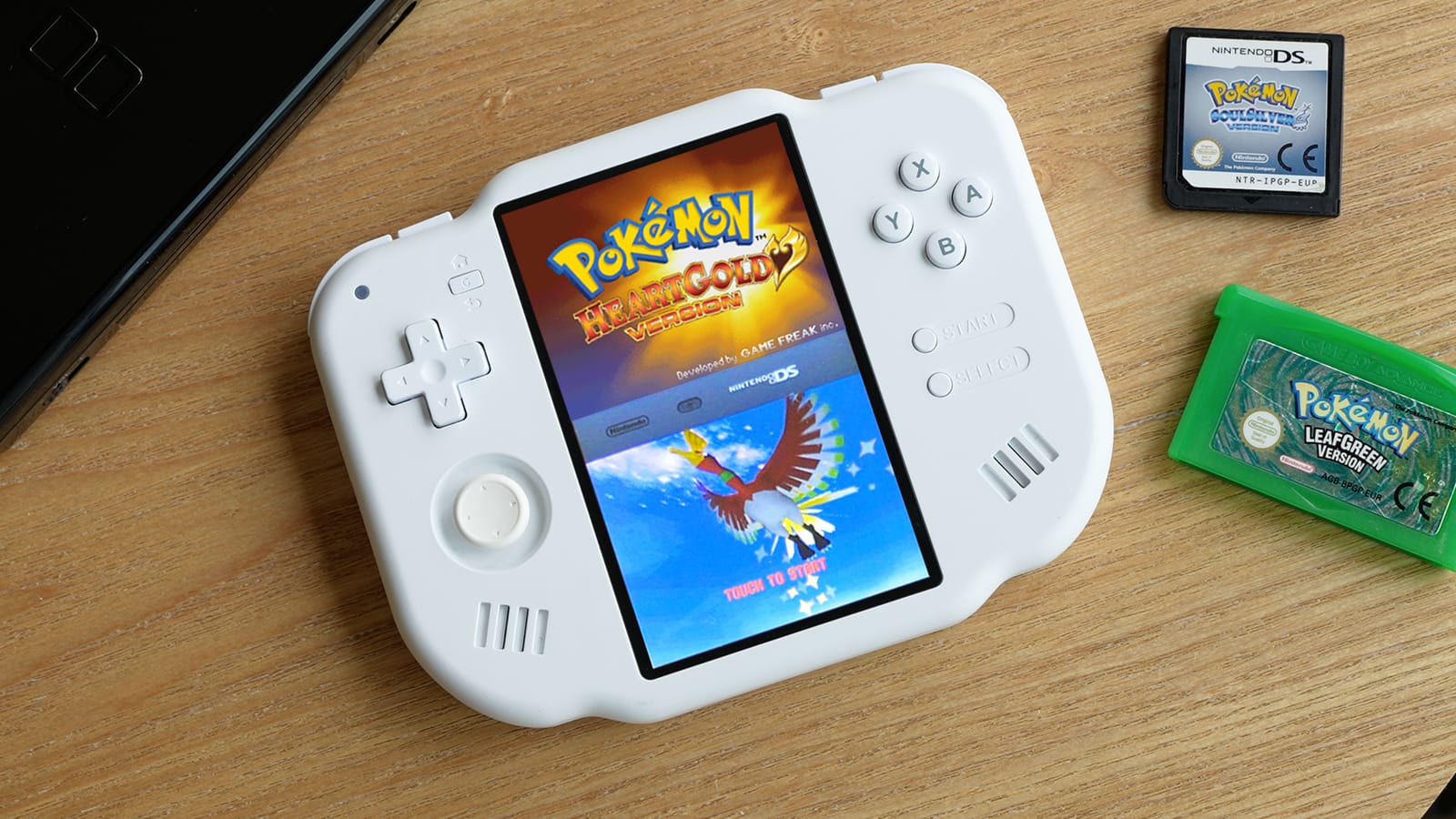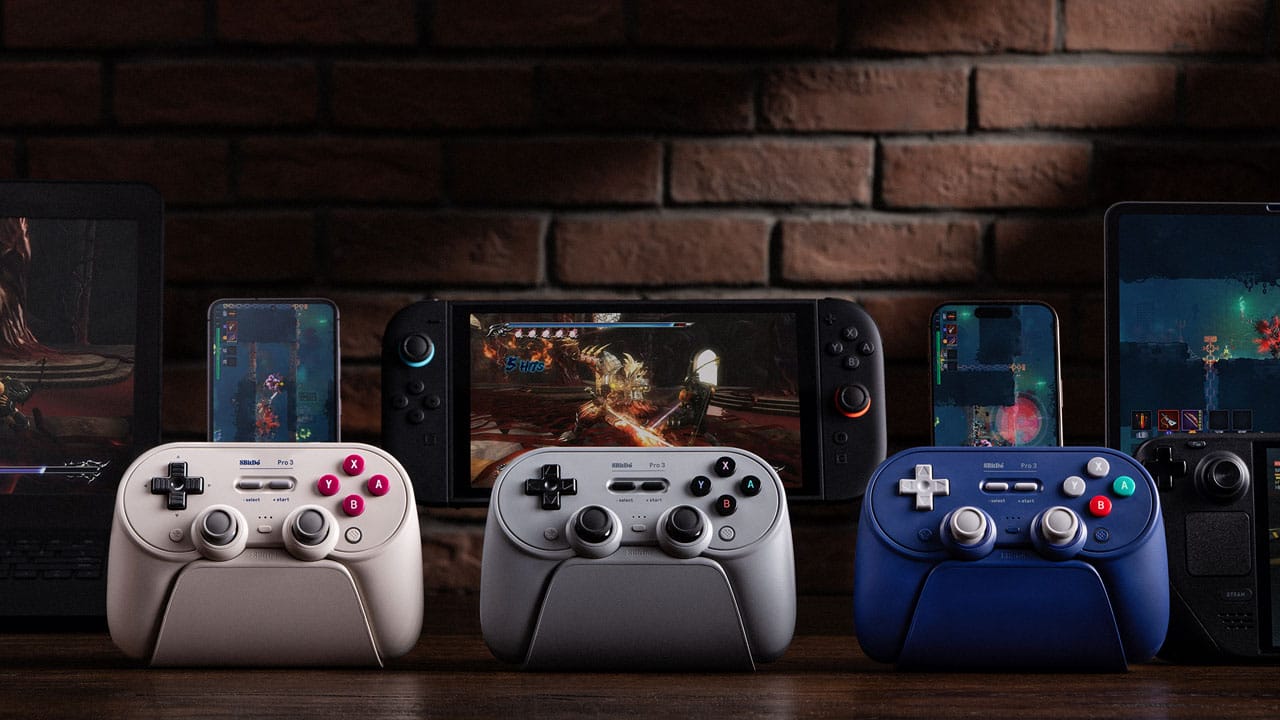Remember how cool you felt the first time you closed the DS for the first time, shutting that clamshell and feeling like an absolute boss? Well, now you can relive that feeling all over again with the Retroid Pocket Flip.!
If you loved the insanely popular Retroid Pocket 3+ when it dropped back in September 2022, then Retroid’s new handheld emulator will probably make you feel like all your birthdays have come at once.
If you’re a fan of watching videos while you work with the screen at 90 degrees or just prefer the protection a clamshell can offer, then you can’t go wrong with this handheld emulator.
Don’t get me wrong; it’s not perfect, and it uses an old chipset to other handhelds.
But, it’s affordable and is a nifty little device that will definitely tick most of your boxes.
The main questions are; is it worth forking out $170 if you’re an emulator purist, and does it have what it takes to feature in our best retro handhelds list?
Everything We Know About The Retroid Pocket Flip
For those new to GoRetroid, they are a Chinese company making some of the best affordable retro handhelds on the market, competing directly with ANBERNIC, another popular handheld manufacturer that just released the RG405M, which just to happens to be my favourite on the market under $200.
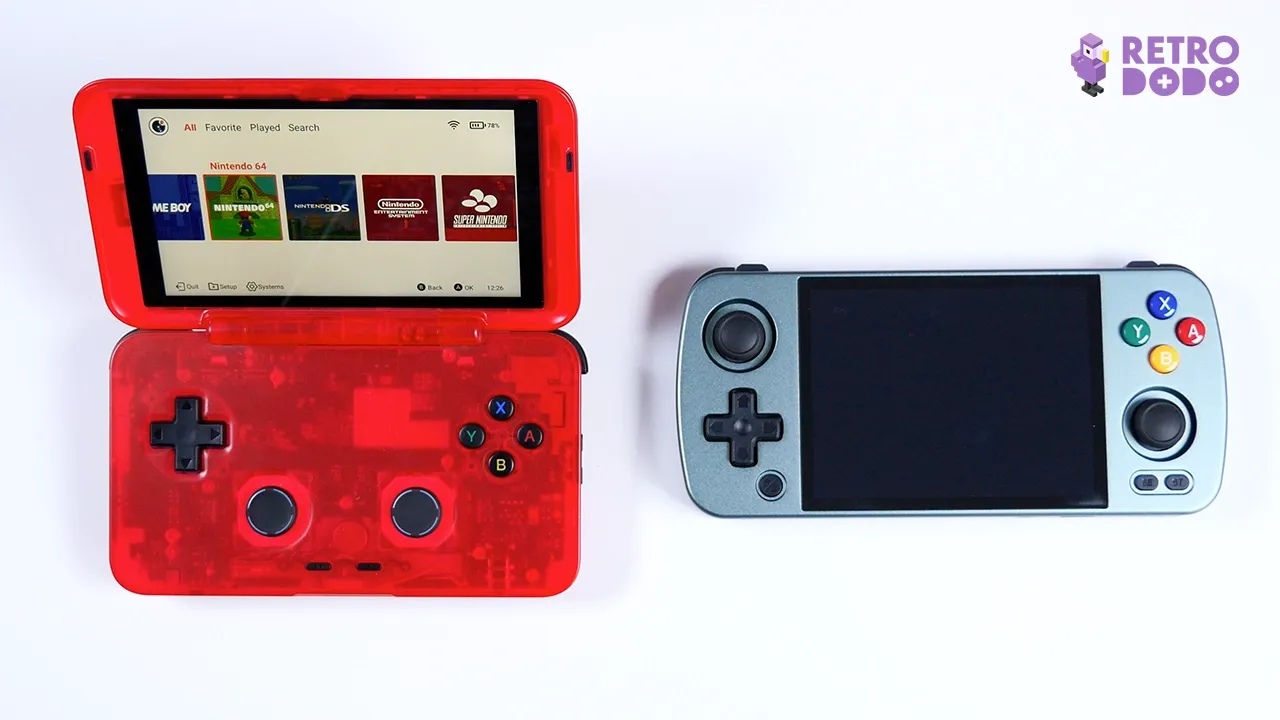
GoRetroid’s latest edition is the Pocket Flip, it features the same specs as the Pocket 3+, but instead puts it in a more nostalgic form factor that adds a few advantages… and a few disadvantages.
After pulling it out of the well designed box, I was surprised at how compact it was, and it has a fair bit of weight to it too, making it feel sturdy and high quality.
I have both the high gloss sports red variant and the watermelon variant in for review, and personally I am not a fan of the high gloss, it’s a fingerprint magnet, the paint is inconsistent making “bumps” in the paintwork visible, and at the back near the hinge you can see the paint hasn’t been installed correctly.
How Does It Look & F eel?
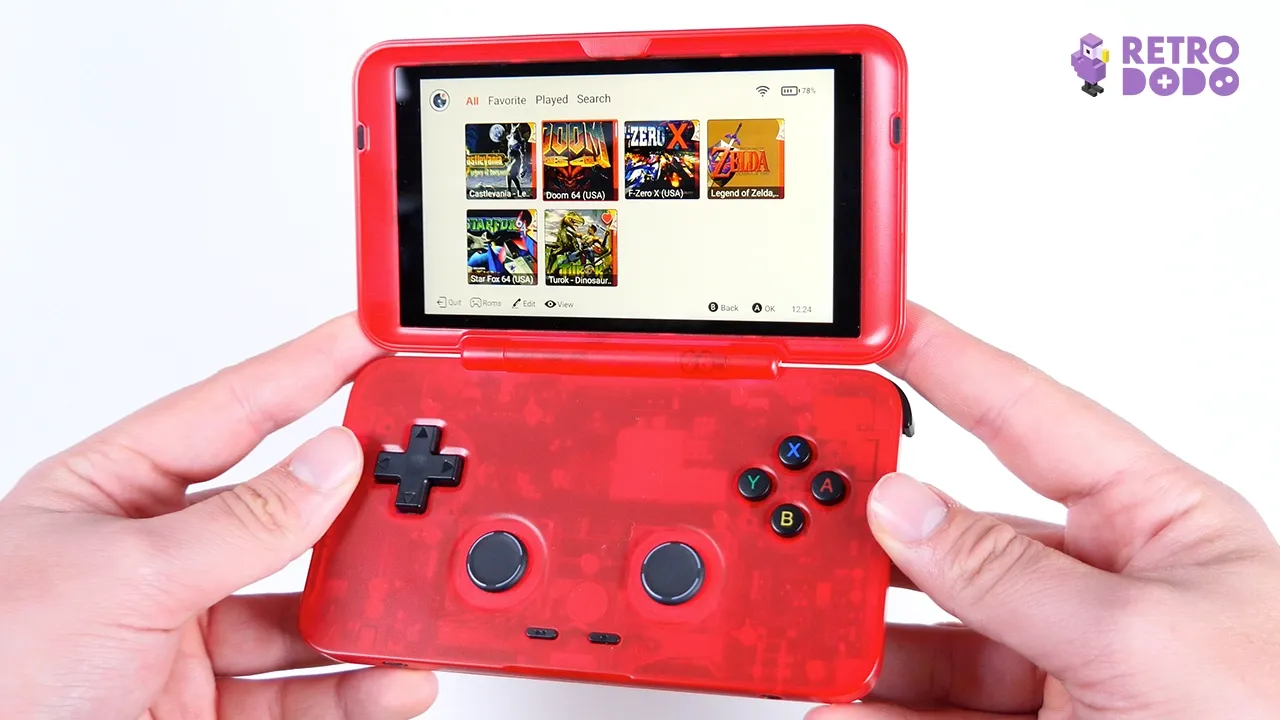
When you open up the device you will be greeted with the 4.7” display which has a resolution of 1334 x 750, which I noticed is incredibly bright coming in at a strong 450nits, I had to turn the brightness down out of the box it was that strong!
The lid’s shell curves around the screen, with grips on either side making it sit away from the buttons when closed.
There’s a small lip on the head too, allowing you to open it easily, and when opened it sits in place very firmly, you’ll have to really shake it hard to get it to flip unwillingly.
Can I Damage The Retroid Pocket Flip By Pushing The Screen Back Too Much?
On the back the screen hits two pegs that stop the screen from snapping too far back, and because I want to give you the best buying advice possible, I tried pushing the screen back as far as it can go to test this.
I wanted to try to find the snapping or break points to give you all peace of mind, and as you can see from the video in this article, it snaps the pegs back, but that’s about it!
This required A LOT of force, and I believe from testing that many of you will not experience any kind of damage unless you apply a silly amount of force.
Yes, sitting on it, or placing heavy books on it in a bag will cause damage, but day to day gameplay you will be absolutely fine.
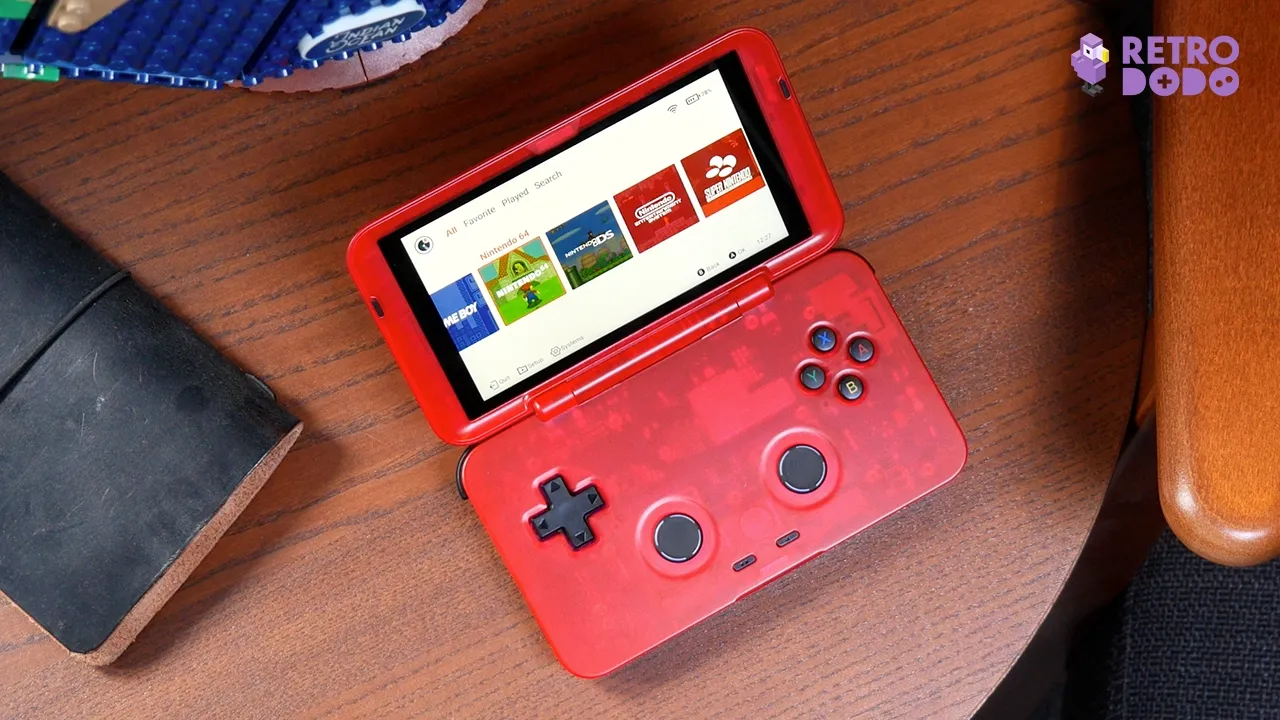
Unfortunately the hinge doesn’t give you any sense of feedback like the original Nintendo DS, instead you just hit the pegs.
I would have liked some kind of natural sound or force that lets me know i’ve hit a stopping point, but there’s nothing on the Pocket Flip which is a little disappointing as they could have made a very satisfying experience here when opening and closing this device.
It kinda just flops… and nobody likes a floppy clamshell… right guys?
Going Face To Face
Inside, i’ll admit the face does feel a little empty, especially because there’s nothing directly in the middle of the device, but for those that don’t like this i recommend the transparent shell colours as it gives it some sense of visual appeal
The DPAD is large, responsive and close to flawless, the action buttons are great, well positioned, colourful and bouncy but these “hall effect” analogue sliders… OH BOY!
Sighs…
As much as I don’t like them, I am not sure what they could have done when you consider that the lid has to be shut.
Thankfully these sliders don’t spin when pushing fairly hard, which I know some do, so they stick to their place quite nicely, they are rubberised but flat and there’s no edges to them to keep your fingers from sliding off if you’re a sweaty gamer like me.
Going Analogue
And the R3/L3 functionalities do work, but they’re not as responsive as your normal analogue sticks.
On both of my Flip’s, the R3/L3 buttons only really click in when they are centered, if you try and do it when your moving them, you won’t feel any feedback and at times they wont even register, it’s the biggest down point of the whole handheld.
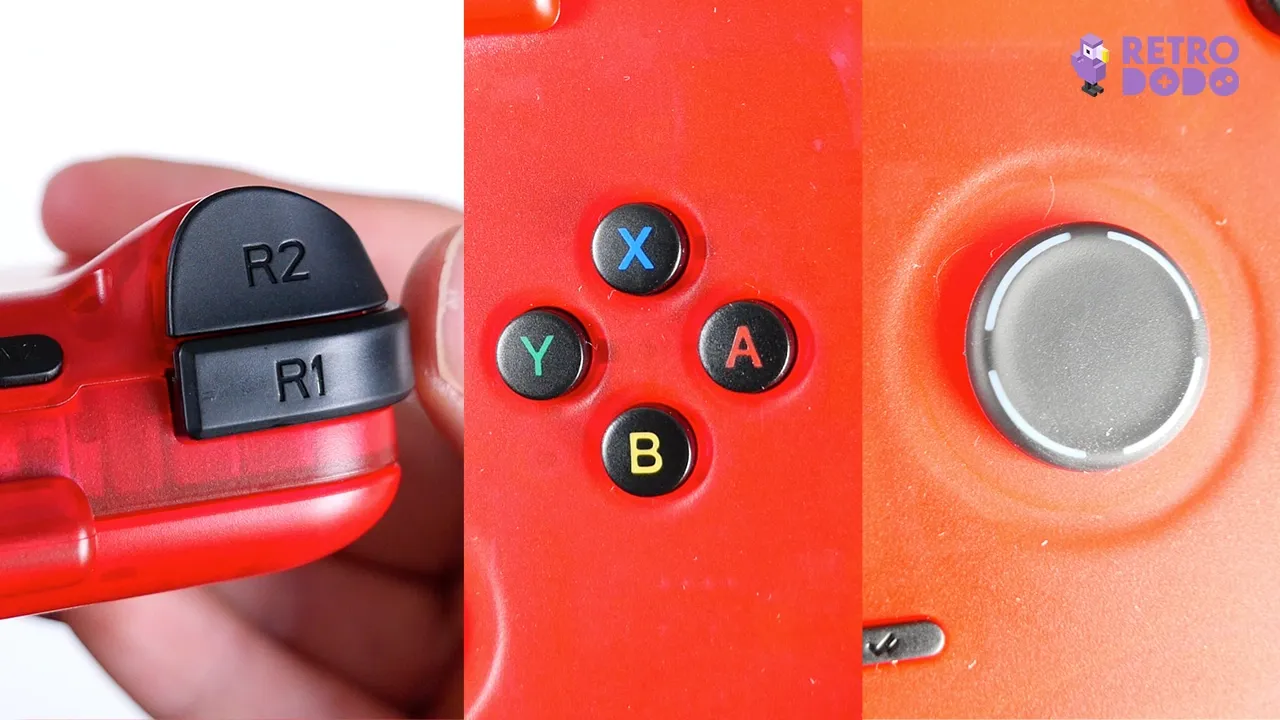
So yeah the sliders… are as good as you’re going to get, perhaps someone needs to design normal analogue sticks that twist down into the device when not in use, and can be popped up when gaming, but obviously this takes time and investment so nobody wants to do it first.
Below that you have the world’s small start and select buttons. If you look around the sides you’ll find your volume buttons, a headphone jack, a on/off button and a SD-card slot that has a really annoying door, you’ll need long nails to get into this easily as there’s only a tiny slit for you to grip it with.
Then moving round under your hinge you will find a USB-C port for charging, a micro HDMI out, and your shoulder buttons.
Shouldering The Burden Of Heavy Gameplay
These shoulder buttons are very comfortable, they curve ever so slightly around the device and offer great feedback when playing. R2 and L2 are flared and have a decent amount of travel to them whereas your L1/R1 are nice and clicky, and are easy to differentiate from all of the others.
Hidden next to these you’ll find additional M1/M2 buttons that can be mapped to whatever shortcuts you would like. I rarely use these but they’re a nice addition, even if they are hidden.
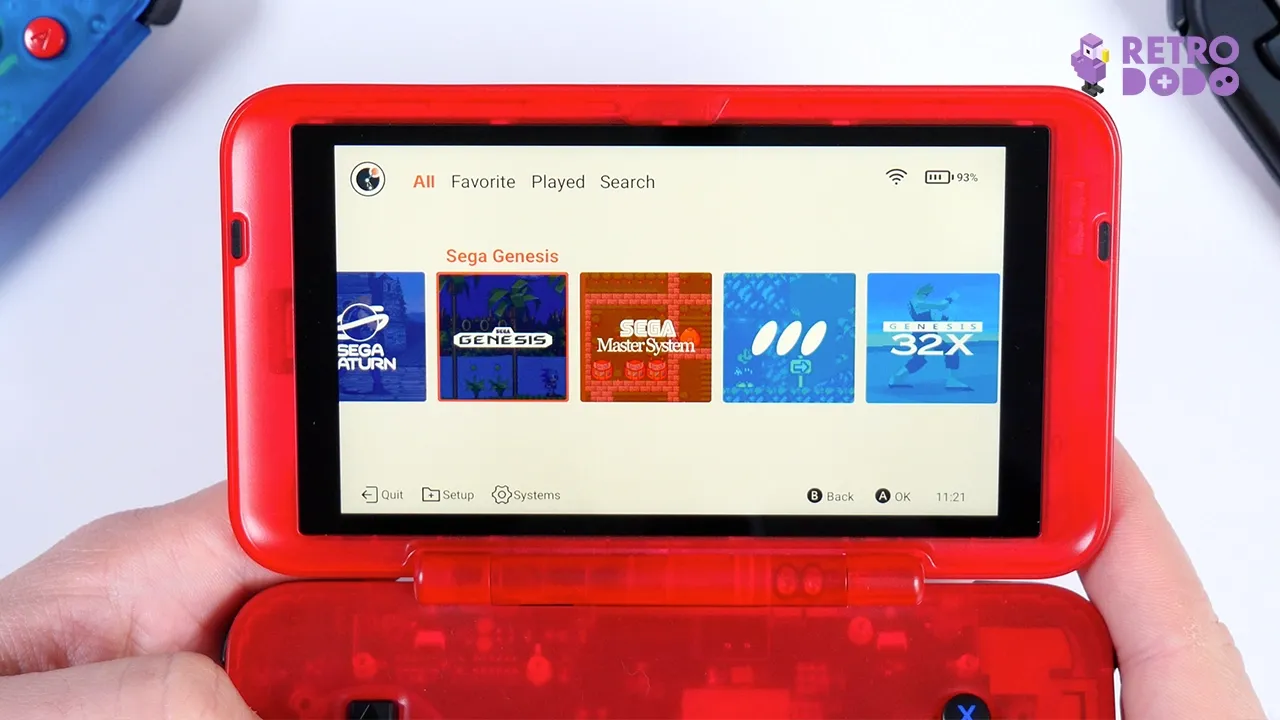
So visually you can see the the Pocket Flip is without doubt a good looking device, and in the hand it’s very comfy, you don’t really recognise the thickness when it’s in the hand, but you will if it’s folded in your pocket, and the shoulder buttons do flare out making it slightly awkward to pocket but an advantage is that it sits nicely on a surface.
The reason that its slightly thicker the Pocket 3+ is quite simply because of the design, and because they have added a larger 5000MAH battery capacity which increases battery life slightly.
When testing though, I did notice that the sleep function drains battery quite quickly, sapping about 25 – 35% overnight, so I recommend turning this off when not in use or tweaking settings in Android to save as much battery as possible.
When playing games though it’s impressive with around 7 hours of gameplay out of a single charge depending on what consoles you are trying to emulate.
Now let’s move onto performance.
Retroid Pocket Flip Specifications
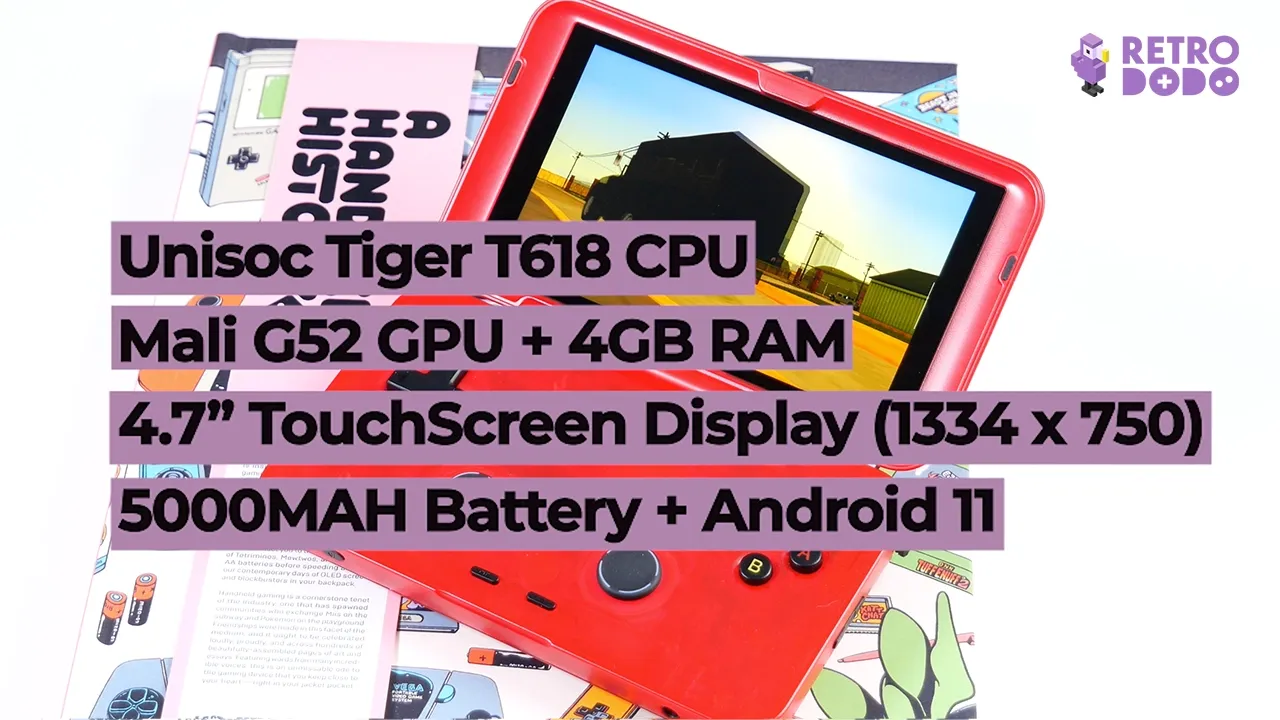
- Unisoc Tiger T618 CPU (2 x A75 @ 2.0GHz + 6 x A55 @ 2.0GHz)
- Mali G52 MC2@850MHz GPU
- 4GB RAM LPDDR4x@1866MHz(3733Mbps)
- 128GB eMMC 5.1 Storage
- 4.7 inch Touch Screen (750×1334 @ 60Hz @ 450nits)
- Android 11
- 5000mAh battery
Out of the box the Retroid Pocket Flip is easy to setup, with a custom step by step interface that even installs the emulators for you automatically, all you have to do is add your SD Card with ROMs and add them to your library.
It’s incredibly easy, and that’s thanks to Android.
Once setup you can easily switch between Android and the GoRetroid Launcher with a few simple steps should you want to switch between easy emulation and cloud gaming for example.
The GoRetroid Launch is very simple, it allows you to organise your ROM files and even drags in the box art too to make it look like a Switch Library of sorts.
Because this has basically the same specs as the Pocket 3+ it can only emulate the same too, so those of you that are looking to upgrade, please take into consideration that this has no actually performance bump.
What Are The Speakers Like On The Retroid Pocket Flip?
The speakers on the Retroid Pocket Flip aren’t the best, but with the option to play using headphones, it’s not something that bothers us too much.
It’s true that the Nintendo DS was never known it’s Bose quality audio, but things have moved on a little since then. No one wants to listen to the Wind Waker soundtrack any other way than in perfect quality – the idea would be absurd!
What Can It Emulate?
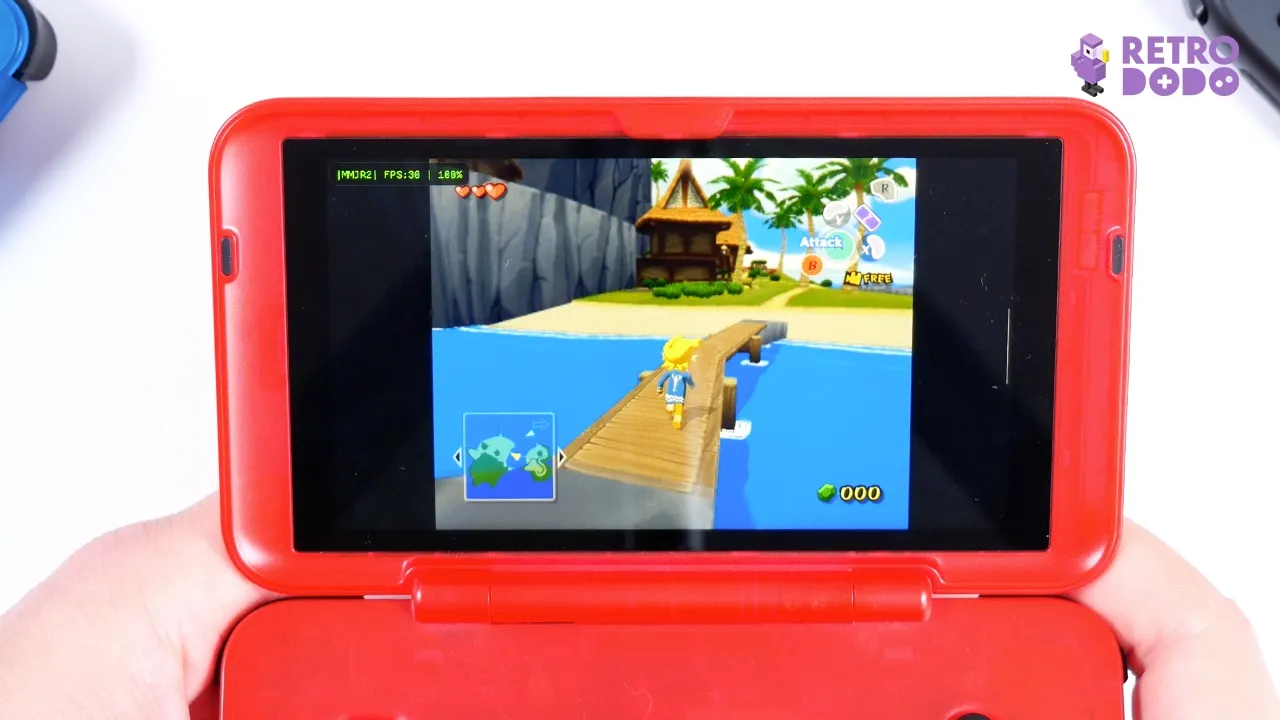
The Retroid Pocket Flip can emulate everything up to and including the best PSP games and the best Dreamcast games very well with very little issues.
For example Sonic Adventure works perfectly, with no frame rate drops, no screen tearing nor any audio issues.
God of War on PSP takes full advantage of the 16:9 screen and can even pull good performance when set to 3x its native resolution making the game super crispy.
I did test Gamecube and most games seemed to work well but a few were hit and miss, so I recommend seeing Gamecube emulation as a bonus.
However, if you try and push it beyond that, for example emulating the best Playstation 2 games, you’ll come across a lot of issues, so much so that it won’t play any PS2 games well at all, so this is unfortunately the Pocket Flip’s limit.
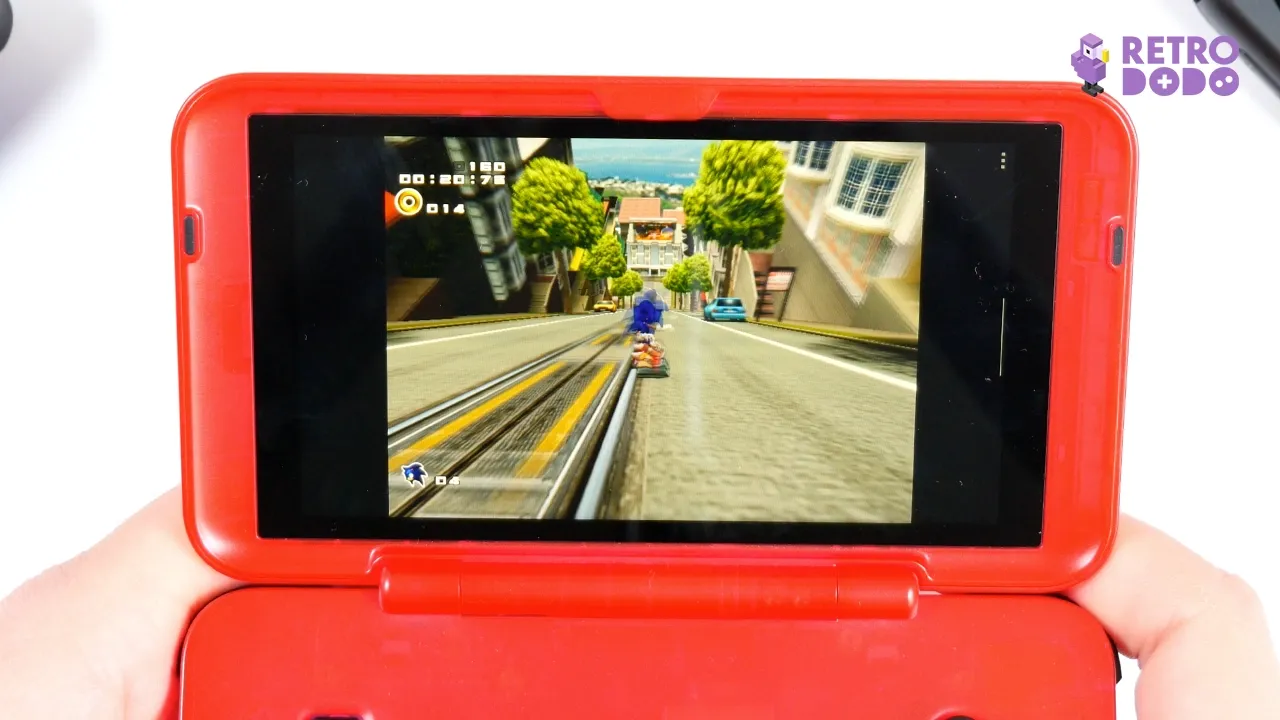
It can emulate other consoles well like Nintendo DS, Nintendo 64, Mega Drive, Gameboy Advance, Wii, NES and others well too.
Some may require some tinkering, but most games emulate well straight out of the box, and that’s always one of the key advantages to buying a GoRetroid Pocket – it’s ready to go out of the box.
It boasts an easy setup, and the Android Emulators do a great job at automatically button mapping to your device on first play.
Can It Play Android Games?
If you want to dive into specific Android games you can too, you can even do some cloud gaming on it if you’re into that, although the screen is a little too small to have a pleasant experience doing it.
But hey… it works for the most part and games like Call of Duty will run but will require you to overlay buttons onto the screen to get it working.
So don’t just think of this as an emulation device; it can in fact play a wide number of Android games if you have the patience when tinkering with button mapping.
Does The Retroid Pocket Flip Have Expandable Storage?
Yes, the Retroid Pocket Flip has an SD Card slot that allows for expanding on the included 128GB storage. Just grab a microSD card and expand right away!
Overall Opinion
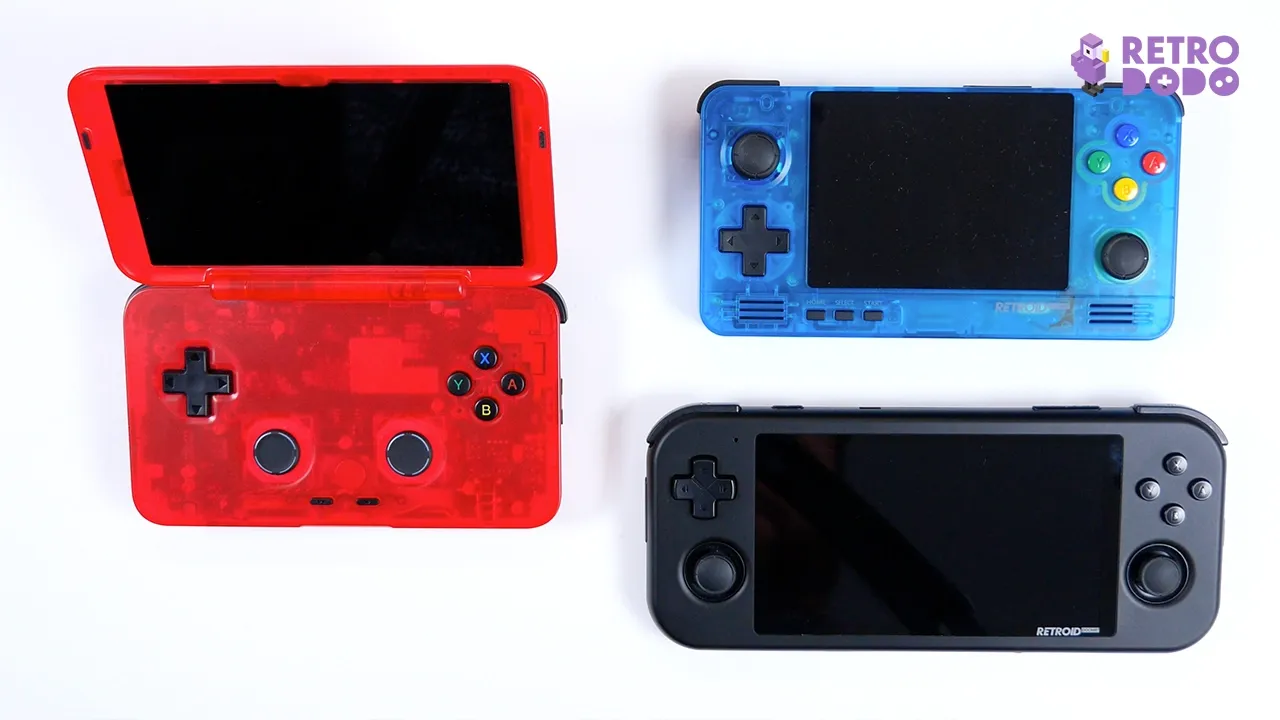
Our overall opinion is that this is a great device. Just like the Pocket 3+, it performs well with consoles under Gamecube, it has a lovely bright screen, great ergonomics and strong battery life. But that said, I don’t think it’s worth buying one if you already have the Pocket 3+; it’s just too similar and the analogue sliders just aren’t for me.
This is targeting clamshell fans who want an easy to setup Android Handheld Emulator under $180, there’s more powerful devices on the market at around the same price for example the RG405M and that has a metal shell and from our experience slightly better performance, even if it has the same specs.
So it’s come in a little late to the party and prices itself in an area where competition is high, so i’ll leave it with you.
Is the Retroid Pocket Flip the best affordable clamshell retro handheld so far? Yeah I would say so,
But is it the best retro handheld for under $200? Far from it.

